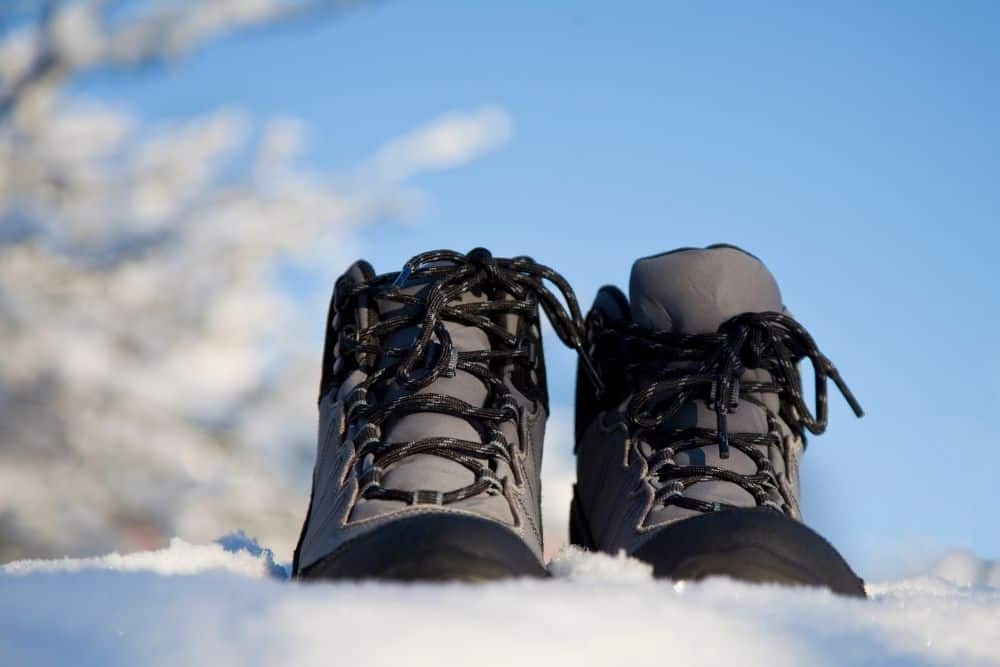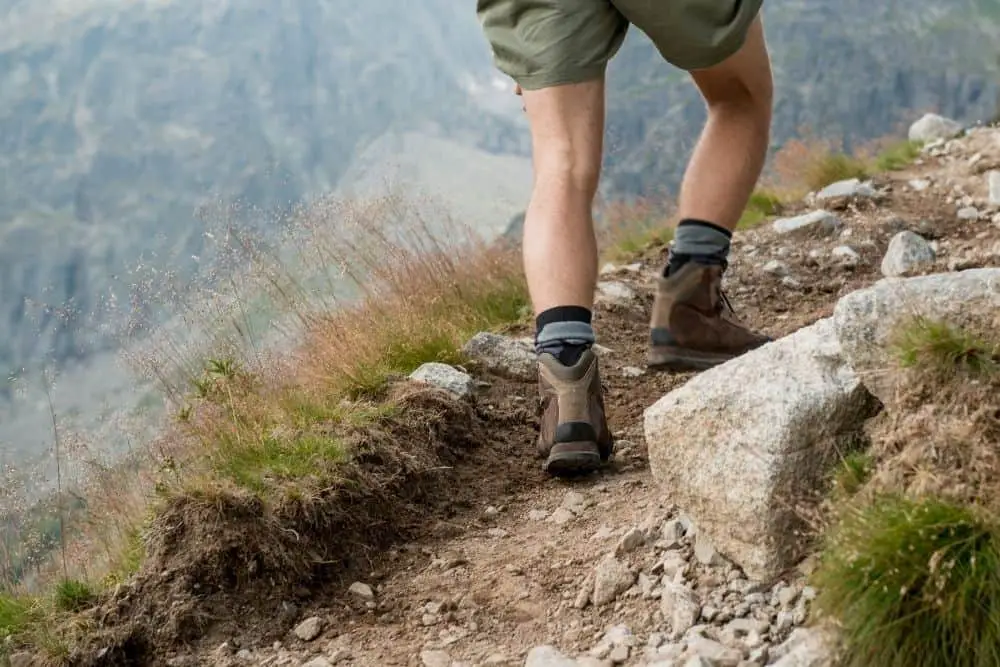Are all winter clothes fit for summer? No? Can we say the same for hiking boots? Well, you’re about to find out. What comes to your mind when you hear winter or its season is near? You think about extreme cold and getting warm clothes in your wardrobe for the season.
Manufacturers of winter clothing make them to keep you warm during the season. The same goes for winter hiking boots. The designs of winter hiking boots are such that they keep your feet warm during each hike in cold seasons.
If you can already picture the extreme cold, temperatures dropping, and snow all around; the last thing you want to worry about is frostbite or getting cold feet, literally.
Hence, you have to protect your feet while hiking with the right hiking boots. But what happens when winter is over, and you want to go hiking during summer?
Does that mean you have to get new hiking boots for summer, or can you wear your winter hiking boots? Well, you are going to find more about that. Let’s find out if you can wear all kinds of winter hiking boots in summer or if you can’t wear any at all.
Contents
Can You Wear Winter Hiking Boots in Summer?
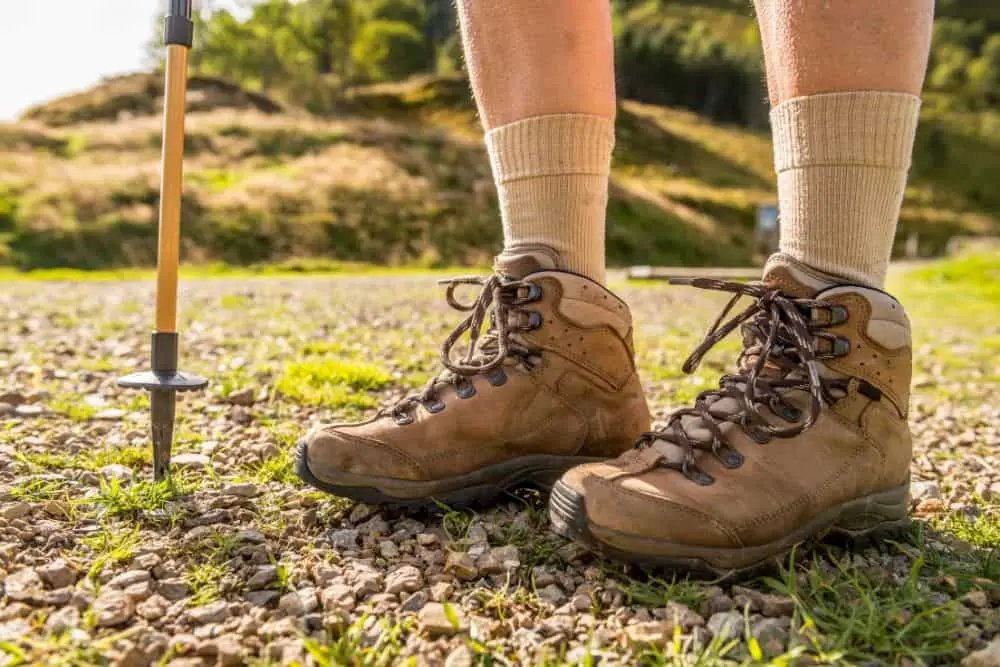
Since you already have some pair of winter hiking boots in your home and wonder if you can wear them for summer, in some cases the answer is Yes.
It’s interesting that summer in the USA doesn’t always come with incredible heat and strong sunlight all over the season as it is supposed to be.
Overall, the majority of us don’t often opt for winter hiking boots during the hot weather since it sounds pretty uncomfortable and not even ideal that much.
However, there are still some particular cases as mentioned above that allow you to wear these boots in summer with real effectiveness and efficiency.
Let’s see where and when you can confidently put on your winter hiking boots during the summer in the United States with great effectiveness.
Light winter hiking boots for summer
If you own minimal-constructed winter summer hiking boots with no heavy padded details around the ankles or all over inside the boots, you can wear them in the summer with a pair of extra breathable and moisture-wicking socks.
Otherwise, you may encounter fishy and super wet feet at the end of day.
Extreme temperature change in one day
If you plan to hike in hot, burning areas like the desert, particularly Death Valley, CA or somewhere else in Montana, you should be aware of the extreme temperature change in just a 24-hour period over there.
This most extreme temperature change that has been recorded in 1972 was the range between -54 to 49 degree F in just a single day in one spot .
This can cause you to freeze to death at night if not kept warm enough. Winter hiking boots will definitely save your life in this case.
So if you are about to hike in one of these places during summer, you should prepare for this situation with a pair of winter boots in your gear.
Somewhere with cool summers
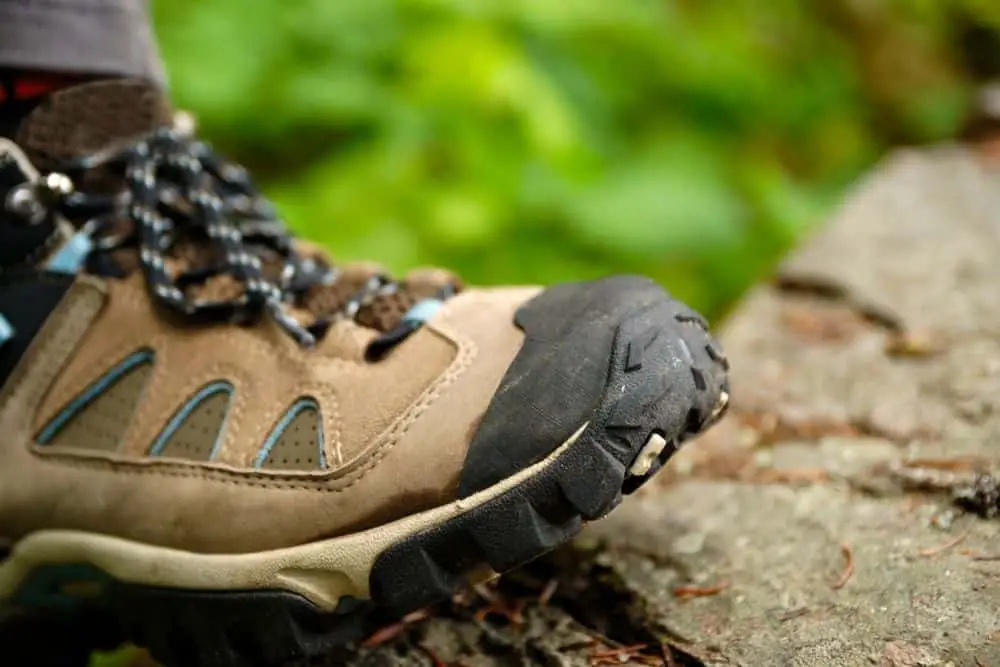
You can also wear winter hiking boots to stand or walk all day long either at work or during the long hike during the summer in either San Francisco – California, Mackinac Island – Michigan, Cascade – Colorado or Alaska.
Mark Twain once said that his coldest summer he had spent was the summer in San Francisco, CA. People who visit these places in summer often enjoy a lot of cool stuff here, including temperature literally.
The average high temperature in Cascade was just around 48 degree F, which is pretty cool and refreshing. This allows you to confidently put on a pair of winter hiking boots with an effective cushioning system inside with a midsole and warm lining.
They are pretty good at keeping your feet cozy and comfortable during this weird weather. Most winter hiking boots are also reinforced with a strong ankle support system and cushion.
If you need constant uphill in your journey in Alaska or Mackinac Island, winter hiking boots can also work pretty well for your feet and leg’s happiness.
Fight against slip
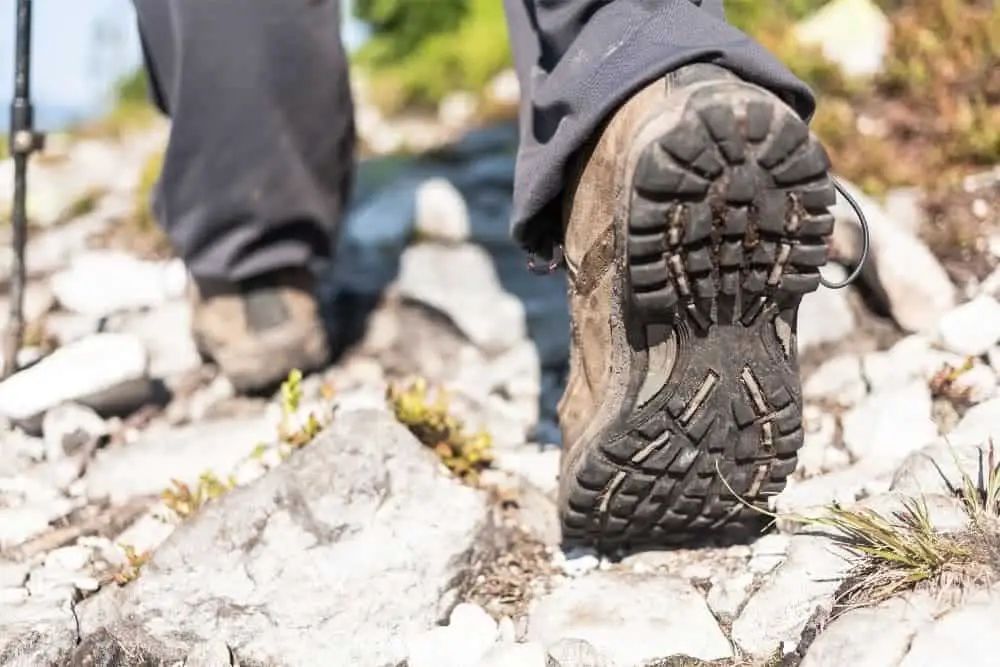
Winter hiking boots have excellent slip resistance due to exceptional rugged and thick rubber outsoles since they are mainly made to withstand slippery snow and wet roads during rainy winter.
These can be also helpful in summer as well.
You may possibly find a lot of slippery, rocky or watery terrains somewhere such as near San Francisco or near Seattle where their sea temperatures are often low all year around (including summer time).
So winter hiking boots are perfect to keep your feet dry and cozy during this weather while supporting your balance and safety to withstand slip during your hike around the sea in these places.
Protection over snake’s bites
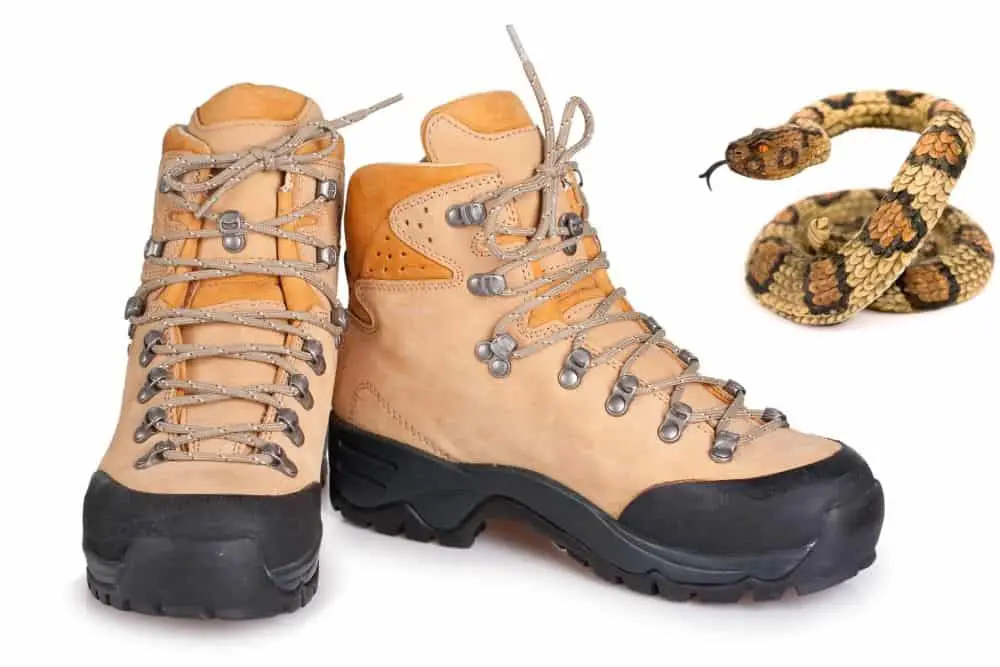
Your safety is about being threatened by snakes during the summer hikes in some high rate of snakes places such as Texas or Georgia.
The good news is the thick, sturdy and well-constructed winter hiking boots can be a good option for your safety since your summer hiking boots seem to have pretty thin construction with less effective protection over these deadly creatures.
Don’t be surprised, let me explain! In this case, winter hiking boots can even save your life.
The thick and stiff construction of winter hiking boots with layers of warm lining is likely to prevent a snake’s fang from getting through the boots and hurting your feet.
Most snakes can’t do this because winter hiking boots often have strongly reinforced toes, heels, outsoles and boot’s shafts (for water resistance purposes).
In addition, the thick and rugged outsoles of winter hiking boots also hold back punctures from below by sharp branches. Your feet will get much better protected.
Winter hiking boots can somewhat heat your feet in these cases, especially during summer time but when it comes to your safety, it’s worth your patience and scarification.
Keep the feet warm during rainy summer

Besides, winter hiking boots can still work well in the early summer weather. In some areas, during this time, the weather will not be dry and hot all the time, but there will be a lot of heavy rain along with whirlwinds.
Winter hiking boots are also able to keep your feet dry, comfy and safe during wet roads. You can also enjoy the warmth these footwear provides if you’re sheltering from the rain somewhere and waiting for it to stop before you can go home.
Pros and Cons Of Wearing Winter Hiking Boots In Summer?
Winter hiking boots are all good for different hiking adventures. But wearing them in summer can come with some bad and good effects at the same time.
So, why should you or shouldn’t you wear winter hiking boots?
Let’s examine a few pros and cons of wearing winter hiking boots in summer.
Pros
1. They are padded
Winter hiking boots are usually comfortable due to the thick construction. This is because they have extra padding and cushion meant to keep your feet comfortable when you are out hiking on rocky, slope and upstaning terrains where your feet may suffer from heavy external shocks more than usual.
So, overall, winter hiking boots are giving better shock absorption for your feet.
2. Keep feet warm when the weather gets extreme
Some hiking destinations such as deserts, their temperature varies quite a lot between days and nights. It can be -5 degree C at night and up to 25-30 degree C at daytime even in summer. Therefore, winter hiking boots with adequate insulation can warm their feet at night time while on hiking trips.
3. Waterproof designs
Winter hiking boots can be waterproof. At least, the thicker construction can expand the time of water touching your feet. But that’s not always the case. So, be sure you go with waterproof winter hiking boots.
When you wear them, they allow you to hike in the rain, muddy waters and not worry about getting your socks or feet wet. You can wear them on any hiking trail all through summer.
4. Better protection
Winter hiking boots have tall ankle coverage, giving your legs extra protection. This coverage protects your ankles from blisters, by preventing cold and other things from entering your hiking boots.
Thick boot construction is also showing better results of saving your feet from snake and insect bites in the middle of jungle hikes.
Additionally, you can tuck your pants into your boot due to their high shaft construction for more style or fit. If you don’t want your pants hanging on your hiking boots loosely, you can fit them into your boots.
5. Great traction
Winter hiking boots are mainly made for rainy and snowy winter weather where you may experience a lot of slip on your go with excellent rugged, deep-grooved rubber outsoles.
Therefore, if you are about to hike somewhere covered with wet, rocky and slippery grounds all over the place during summer, these boots can provide exceptional traction for your safety against slip and fall.
Cons
1. They have bulky designs
Winter hiking boots can be bulky – this is because they have designs that provide enough insulation for hikers with layers of warm lining and thick outsoles.
Therefore, they may slow you down, make your feet and legs quickly tired, awkward or uncomfortable throughout your hike due to their less flexibility, heaviness and stiffness.
2. The worst case, it’s bad for the health
The heavily padded construction of winter hiking boots can make your feet sweat while doing any activity, especially in the summer. This may be bad for you if your feet sweat a lot. If you couple that with non-moisture-wicking socks and you have wet and smelly feet afterward.
Wet socks and feet allow fungi to stay in your hiking boots, resulting in smelly and itching feet.
Also, your feet can get cold from the wetness, it’s not a good thing for your health as tons of important nerves are located in the soles of the feet.
Conclusion
Not all attires are fit for all year round and that includes your hiking boots. Winter hiking boots are majorly for the cold seasons, but you can also wear them during summer. This depends on the winter hiking boot’s construction, how you wear it, the hiking trail and duration, and other factors.
Also, wearing winter hiking boots during summer has its advantages and disadvantages. Therefore, always consider the hiking duration, trail, and comfort when you want to go hiking during summer.

